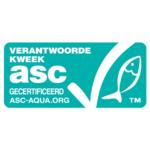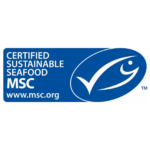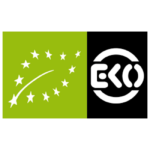Northern prawn
Atlantic Ocean, north-east (FAO 27)
Bottom otter trawl
- Jan
- Feb
- Mar
- Apr
- May
- Jun
- Jul
- Aug
- Sep
- Oct
- Nov
- Dec
Shrimp is a type of crustaceans with elonged bodies and a primarily swimming mode of locomotion. Under the broader definition, shrimp may be synonymous with prawn. Covering the stalk-eyed swimming crustaceans with long muscular tails long whiskers and slender legs. Any small crustaceans that resemble a shrimp are called one. The habitat of the shrimp covers all waters, near the shore, rivers, lakes and in the deep sea. There are several types of shrimp on the dutch market. Wild shrimps from colder waters like the brown shrimp and the northern prawn are in general a bit smaller. Big shrimps or prawns also referred to as ‘gamba’, are most often imported from tropical areas, where they are farmed.
The northern prawn lives in the northern, colder waters of the Atlantic and Pacific Ocean. This species prefers water temperatures between 1-6 °C and lives at depths of 50 – 500 m on sandy, muddy bottoms. All northern prawns are males when are born but turn female after 4-5 years. This species can reach a maximum age of 8 years and can grow up to 16,5 centimetres. They live on the seabed during the day and move upwards into shallower water at night to feed. There are several stocks of northern prawn in the Atlantic Ocean.
Atlantic Ocean, north-east (FAO 27)
Bottom otter trawl
Atlantic Ocean, north-west (FAO 21)
Bottom otter trawl
Atlantic Ocean, north-west (FAO 21)
Deelgebieden: Atlantic Ocean, north-west
Bottom otter trawl, Bottom trawls
Atlantic Ocean, north-east (FAO 27)
Deelgebieden: Barents sea
Bottom otter trawl
Atlantic Ocean, north-east (FAO 27)
Deelgebieden: Iceland grounds
Bottom otter trawl
Atlantic Ocean, north-east (FAO 27)
Deelgebieden: Skagerrak and Kattegat
Bottom trawls

Fish with the ASC label is farmed in a sustainable manner.

Fish with the MSC label is caught sustainably.
This fish is not being overfished or is being responsibly farmed, with minimal impact on the environment.
This fish is a second choice. There are still some improvements to be made in this fishery or fish farm.
Do not buy this fish. It's being overfished or the way it's farmed or caught has a negative impact on the environment.

There is fish available of this species that is farmed or caught using high welfare standards.

GlobalG.A.P. certified farms are doing a step in the right direction in terms of sustainability. A few species with this label are getting a better score on the VISwijzer.

Organic standards are the strictest when it comes to fish feed. They also require certain measures for animal well-being.